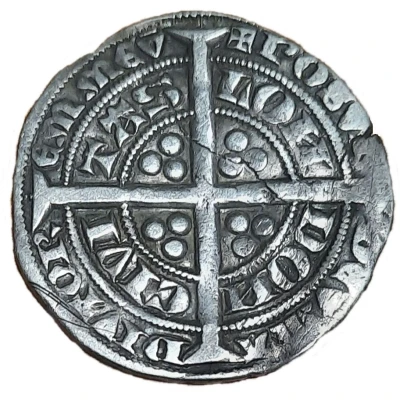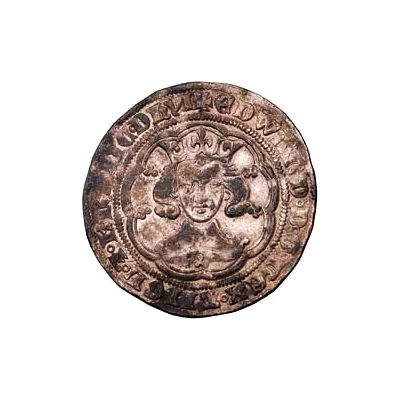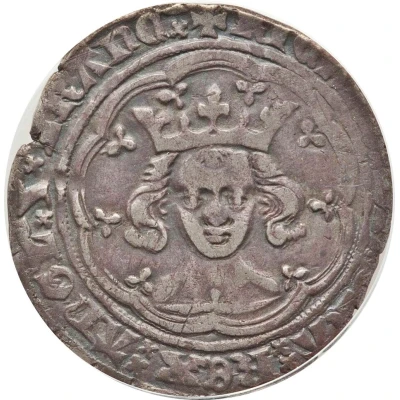


© ctucker (CC BY)
1 Groat - Edward III 4th issue; Treaty period ND
| Silver | 4.5 g | 27 mm |
| Issuer | England (United Kingdom, British Overseas Territories and Crown Dependencies) |
|---|---|
| King | Edward III (1327-1377) |
| Type | Standard circulation coin |
| Years | 1361-1369 |
| Value | 1 Groat (1⁄60) |
| Currency | Pound sterling (1158-1970) |
| Composition | Silver |
| Weight | 4.5 g |
| Diameter | 27 mm |
| Thickness | 1 mm |
| Shape | Round (irregular) |
| Technique | Hammered |
| Orientation | Variable alignment ↺ |
| Demonetized | Yes |
| Updated | 2024-10-09 |
| Numista | N#327960 |
|---|---|
| Rarity index | 92% |
Reverse
Long cross pattée, with trefoil in each angle, legend around.
Script: Latin
Lettering:
POSVI DEVM ADIVTOREM MEVM
CIVI TAS LON DON
Translation:
I have made God my helper
City of London
Comment
House of Plantagenet (1154-1399), Edward III (1327-77), Fourth coinage (1351-77), Treaty period (1361-69).
Treaty series B silver groat, struck at the Tower mint, London, initial mark cross potent (5).
Interesting fact
One interesting fact about the 1 Groat - Edward III (4th issue; Treaty period) ND (1361-1369) coin is that it was minted during a time of economic and political change in England. The coin was issued during the reign of King Edward III, who ruled from 1327 to 1377, and it was part of a series of coins minted during the Treaty period, which was a time of relative peace and stability in Europe. The coin's design features a crowned bust of King Edward III on the obverse side, and a long cross with three pelicans on the reverse side. The use of silver in the coin's minting was a significant change from previous issues, which were made of base metals, and it reflects the growing prosperity and influence of England during this period.



